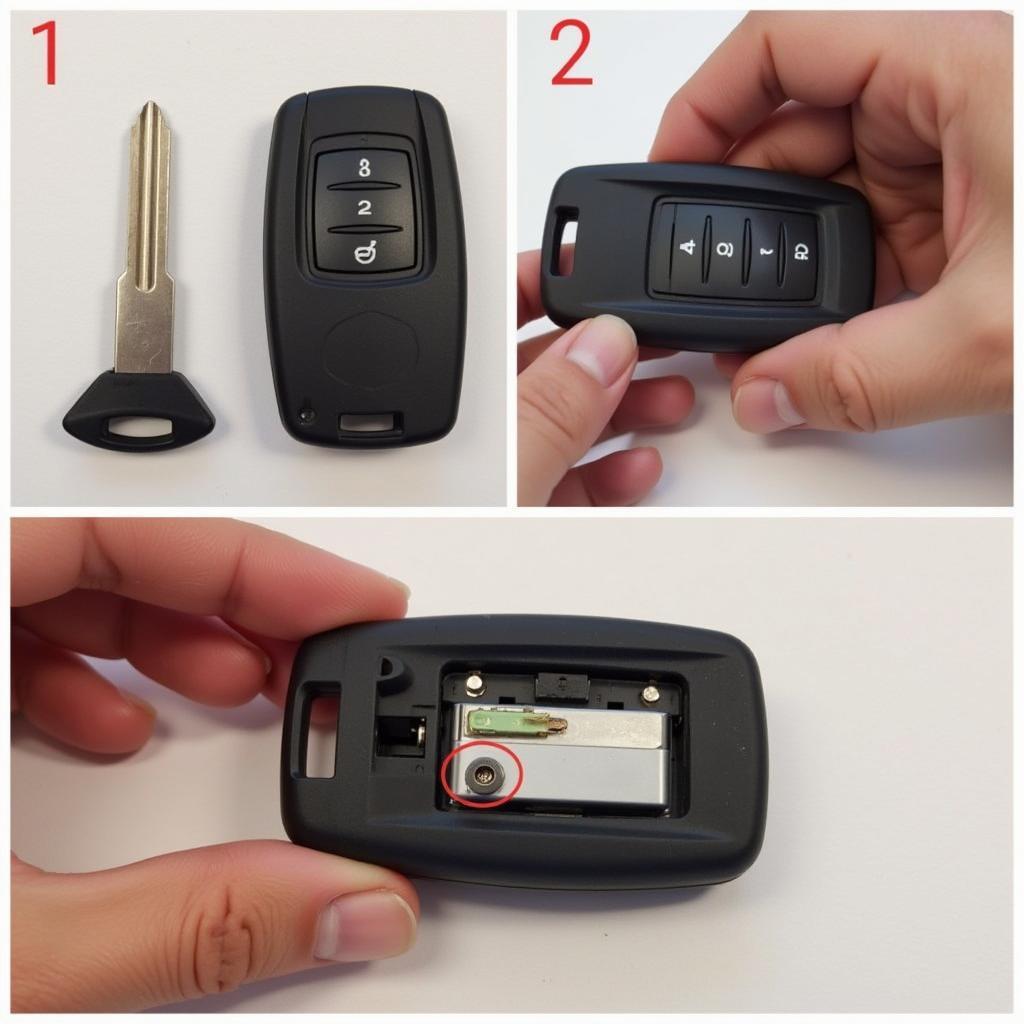The brake warning switch, a small but vital component of your vehicle’s braking system, plays a crucial role in safety. It signals the brake lights to illuminate when you press the brake pedal and often plays a part in activating other safety systems like traction control and stability control. If your brake warning switch malfunctions, it can lead to a host of issues, jeopardizing your safety and that of others on the road.
How Does a Brake Warning Switch Work?
This unassuming switch, often located above the brake pedal arm, acts as a bridge in an electrical circuit. When the brake pedal is not engaged, the circuit remains open, preventing the flow of electricity. Pressing down on the brake pedal activates the switch, closing the circuit and allowing current to flow to the brake lights, illuminating them.
Common Brake Warning Switch Problems
A faulty brake warning switch can manifest in a few telltale ways:
- Brake lights stay on constantly: A switch stuck in the “on” position will keep your brake lights illuminated even when you’re not braking.
- Brake lights fail to turn on: Conversely, a switch stuck in the “off” position can prevent your brake lights from illuminating when you apply the brakes, creating a dangerous situation for you and other drivers.
- ABS or Traction Control lights illuminate: As the brake warning switch can feed signals to other systems, a malfunction can trigger warning lights related to ABS or traction control, even if those systems aren’t experiencing direct issues.
What Causes Brake Warning Switch Failure?
Several factors can contribute to a failing brake warning switch:
- Wear and tear: Like any mechanical component, the switch can wear down over time due to the repeated pressing and releasing of the brake pedal.
- Misalignment: If the switch becomes misaligned, it may not engage or disengage properly when the brake pedal is pressed.
- Corrosion or damage: Exposure to moisture, dirt, or debris can lead to corrosion or physical damage to the switch, affecting its functionality.
- Short circuit: An electrical short in the switch or its wiring can also cause it to fail.
Diagnosing a Faulty Brake Warning Switch
Determining if the brake warning switch is the root of your problem often involves a few checks:
- Visual inspection: Start by visually inspecting the switch for any signs of damage, corrosion, or misalignment.
- Brake light check: Have someone observe the brake lights while you press and release the pedal to ensure they are functioning correctly.
- Switch testing: If the brake lights are not working as they should, you can test the switch’s continuity using a multimeter.
Brake Warning Switch Replacement and Repair
In most cases, replacing a faulty brake warning switch is the most effective solution. While it’s a relatively straightforward procedure for those with mechanical experience, it’s often advisable to have a qualified mechanic handle the replacement.
Remote Diagnostics and Software Solutions
The automotive landscape is rapidly evolving. Modern vehicles are heavily reliant on software and electronics, and the brake warning switch is no exception. In some cases, issues related to the brake warning switch might not stem from a physical fault but rather from software glitches or communication errors within the vehicle’s network.
This is where remote diagnostics and software solutions come into play. Using specialized equipment and software, trained technicians can remotely access your vehicle’s onboard computer to:
- Read and diagnose fault codes: This allows for pinpointing the exact cause of the problem, including those related to the brake warning switch.
- Reprogram or update software: In situations where a software glitch or outdated software is causing the issue, a remote update or reprogramming can often rectify the problem.
- Calibrate and configure systems: Remote access also enables technicians to calibrate and configure related systems, ensuring they communicate and function correctly with the brake warning switch.
1997 nissan d21 park brake warning switch
Benefits of Remote Solutions
Remote diagnostics and software solutions offer several advantages:
- Convenience: Diagnosing and resolving issues remotely eliminates the need for you to physically take your vehicle to a repair shop.
- Speed: Remote diagnostics can often identify and address problems much faster than traditional methods, minimizing downtime.
- Cost-effectiveness: In many cases, remote solutions can be more cost-effective than traditional repairs, especially for software-related issues.
“Remote diagnostics are invaluable for addressing brake warning light issues,” says automotive electronics specialist, John Miller. “We can often pinpoint the root cause and even reprogram faulty systems remotely, saving car owners time and money.”
Preventing Brake Warning Switch Problems
While not always preventable, you can take steps to prolong the life of your brake warning switch:
- Regular maintenance: Have your braking system inspected regularly by a qualified mechanic.
- Avoid harsh braking: Whenever possible, brake smoothly and gradually to minimize stress on the switch.
- Address moisture: Inspect the area around the brake pedal for any signs of moisture or leaks, and address them promptly.
1977 chryrsler newyorker brake warning light switch
Conclusion
The brake warning switch, though a small part, plays a critical role in your safety on the road. By understanding its function, potential problems, and solutions, you can ensure your vehicle remains safe and roadworthy. Whether it’s a physical replacement or a software fix, addressing brake warning switch issues promptly is crucial for your peace of mind and safety on the road.

